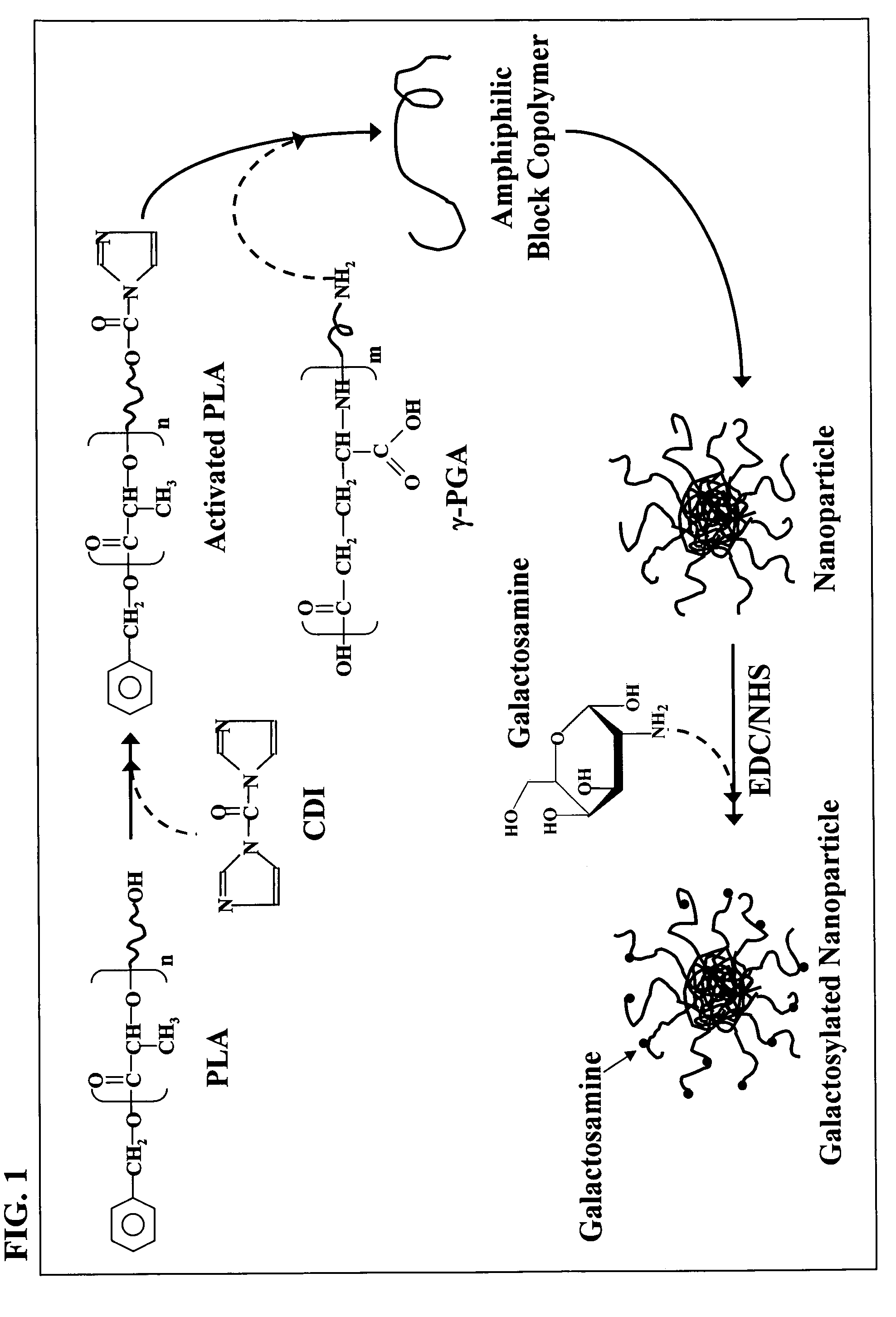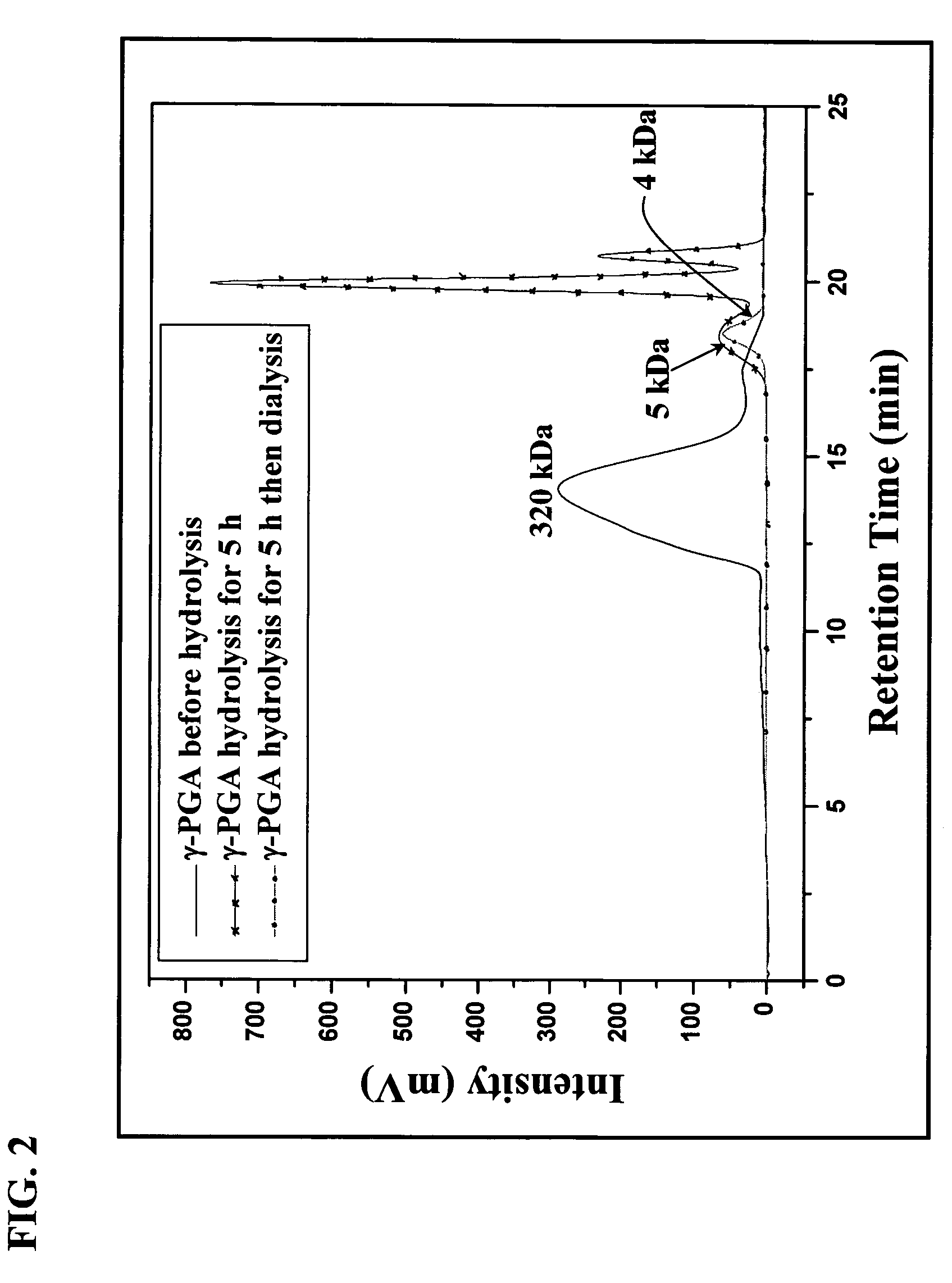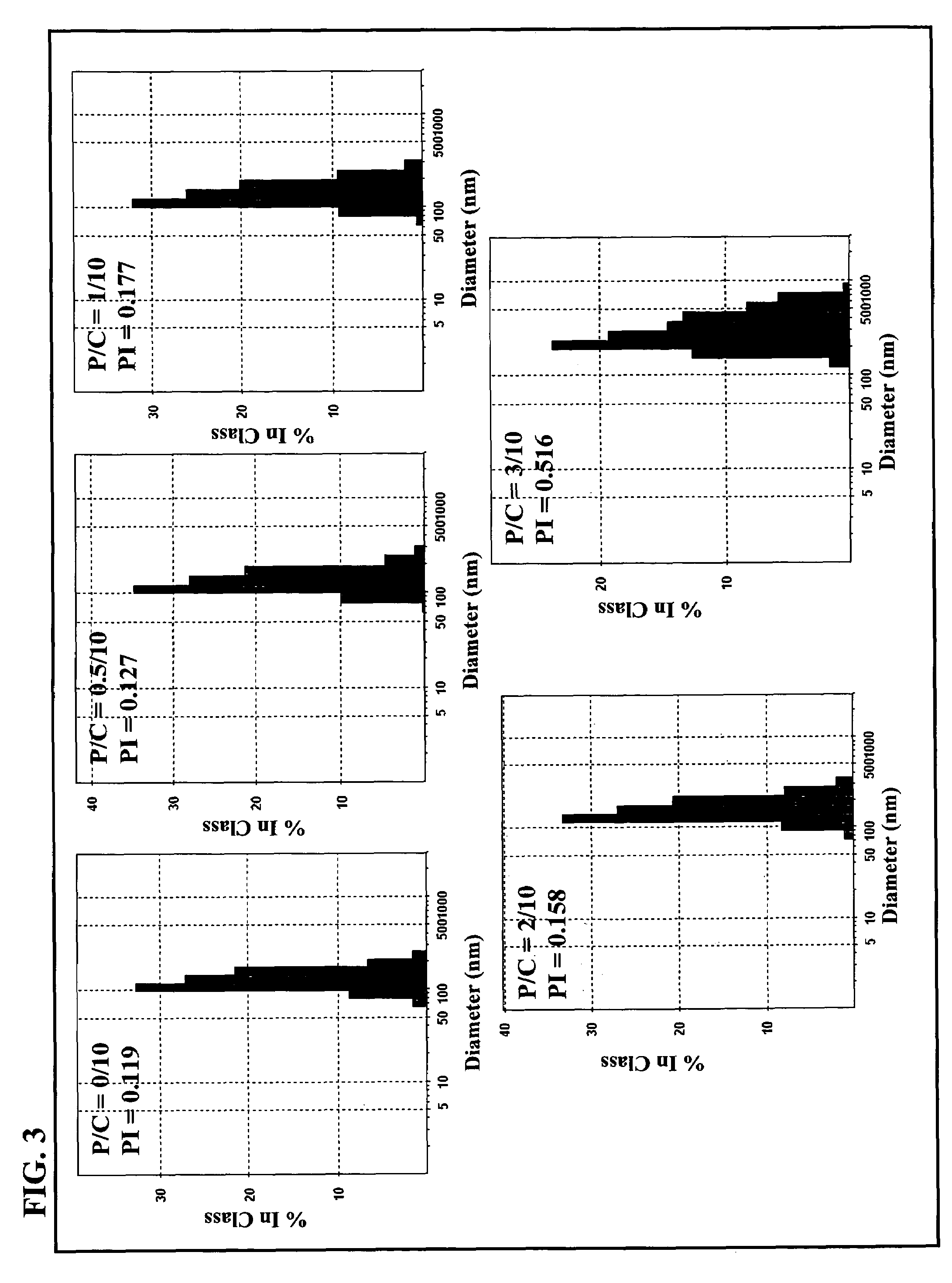Nanoparticles for targeting hepatoma cells
a technology of nanoparticles and hepatoma cells, applied in the field of nanoparticles, can solve the problems of limited chemotherapy for cancer, and restricted therapeutic efficacy
- Summary
- Abstract
- Description
- Claims
- Application Information
AI Technical Summary
Problems solved by technology
Method used
Image
Examples
example no.1
EXAMPLE NO. 1
[0036]Materials
[0037]Paclitaxel powder (purity>99%) and clinical commercial paclitaxel [Phyxol®, contained 6 mg paclitaxel, 527 mg Cremaphor EL and 47.7% (v / v) alcohol per milliliter] were obtained from Sinphar Pharmaceutical Co., Ltd. (Taipei, Taiwan). PLA [poly(L-lactide), Mn: 10 kDa, with a polydispersity of 1.1 determined by the GPC analysis] was supplied by the Biomedical Engineering Center, Industrial Technology Research Institute (Hsinchu, Taiwan). Dimethyl sulfoxide (DMSO99%), N-(3-dimethylaminopropyl)-N′-ethylcarbodiimide (EDC), N-hydroxysuccinimide (NHS), galactosamine, and sodium cholate were purchased from Sigma (St. Louis, Mo.). 4-Dimethylaminopyridine (DMAP) and 1,4-dioxane were obtained from ACROS (Janssen Pharmaceuticalaan, Belgium). All other chemicals used in preparing nanoparticles are reagent grade.
example no.2
EXAMPLE NO. 2
[0038]Production and Purification of γ-PGA
[0039]γ-PGA (FIG. 1) was produced by Bacillus licheniformis (ATCC 9945, Bioresources Collection and Research Center, Hsinchu, Taiwan) as per the method reported by Yoon et al. with slight modifications (Biotechnol. Lett. 2000;22:585-588). Highly mucoid colonies (ATCC 9945a) were selected from Bacillus licheniformis (ATCC 9945) cultured on the E medium (L-glutamic acid, 20.0 g / l; citric acid, 12.0 g / l; glycerol, 80.0 g / l; NH4Cl, 7.0 g / l; K2HPO4, 0.5 g / l; MgSO4.7H2O, 0.5 g / l, FeCl3.6H2O, 0.04 g / l; CaCl2.2H2O, 0.15 g / l; MnSO4.H2O, 0.104 g / l, pH 6.5) agar plates at 37 for several times. Subsequently, young mucoid colonies were transferred into 10 ml E medium and grown at 37 in a shaking incubator at 250 rpm for 24 hours. Afterward, 500 μl of culture broth was mixed with 50 ml E medium and was transferred into a 2.5-1 jar-fermentor (KMJ-2B, Mituwa Co., Osaka, Japan) containing 950 ml of E medium. Cells were cultured at 37. The pH was...
example no.3
EXAMPLE NO. 3
[0043]Hydrolysis of γ-PGA
[0044]The average molecular weight (Mn) of the purified γ-PGA obtained via the previous fermentation procedure was about 320 kDa. The purified γ-PGA was then hydrolyzed in a tightly sealed steel container at 150 for distinct durations. The average molecular weight along with the polydispersity of the hydrolyzed γ-PGA were determined by a gel permeation chromatography (GPC) system equipped with a series of PL aquagel-OH columns (one Guard 8 Jim, 50×7.5 mm and two MIXED 8 μm, 300×7.5 mm, PL Laboratories, UK) and a refractive index (RI) detector (RI2000-F, SFD, Torrance, Calif.). Polyethylene glycol (molecular weights of 106-22,000 g / mol) and polyethylene oxide (molecular weights of 20,000-1,000,000 g / mol) standards of narrow polydispersity (PL Laboratories, UK) were used to construct a calibration curve. The mobile phase contained 0.01M NaH2PO4 and 0.2M NaNO3 and was brought to a pH of 7.0. The flow rate of mobile phase was 1.0 ml / min, and the col...
PUM
| Property | Measurement | Unit |
|---|---|---|
| concentration | aaaaa | aaaaa |
| particle size | aaaaa | aaaaa |
| particle size | aaaaa | aaaaa |
Abstract
Description
Claims
Application Information
 Login to View More
Login to View More - R&D
- Intellectual Property
- Life Sciences
- Materials
- Tech Scout
- Unparalleled Data Quality
- Higher Quality Content
- 60% Fewer Hallucinations
Browse by: Latest US Patents, China's latest patents, Technical Efficacy Thesaurus, Application Domain, Technology Topic, Popular Technical Reports.
© 2025 PatSnap. All rights reserved.Legal|Privacy policy|Modern Slavery Act Transparency Statement|Sitemap|About US| Contact US: help@patsnap.com



